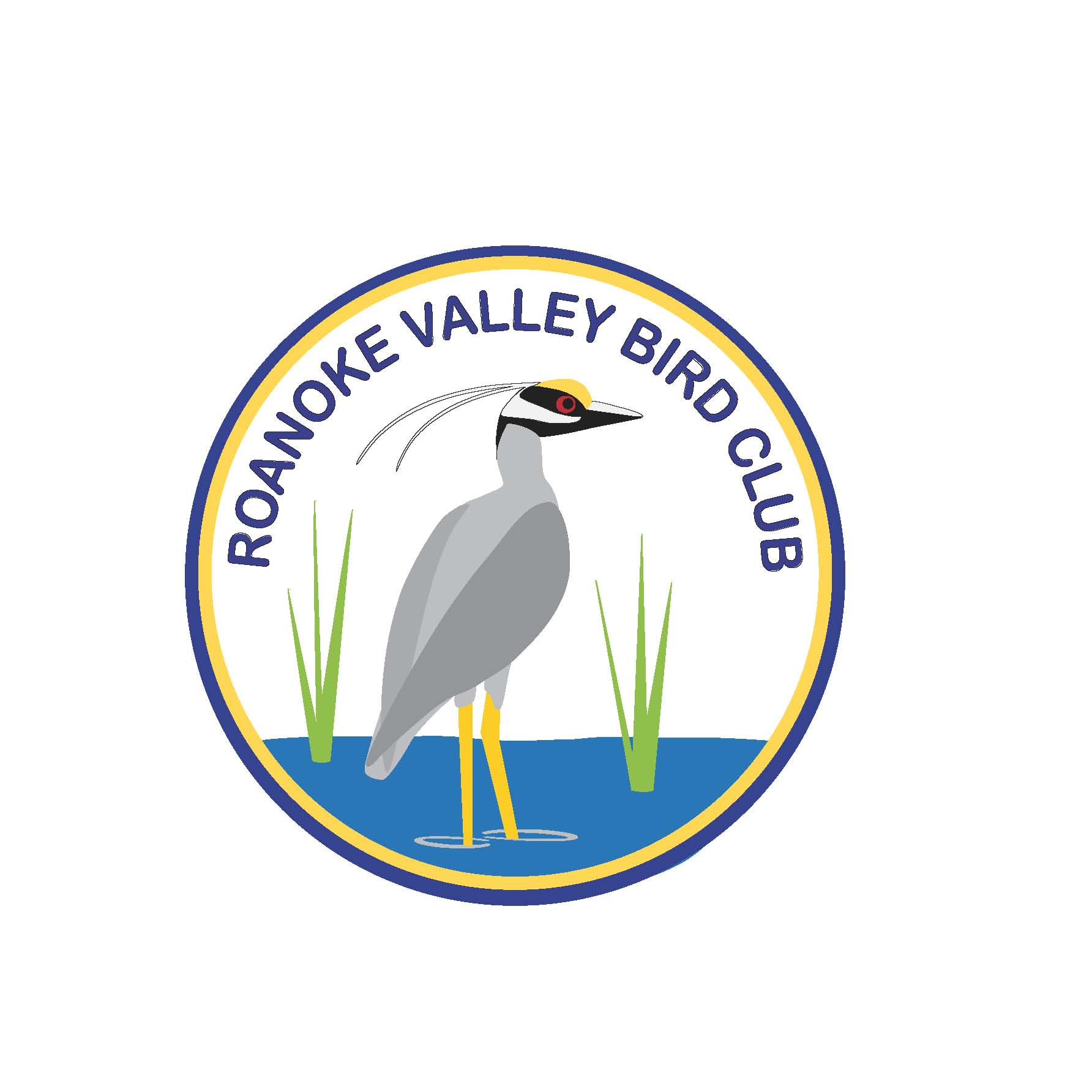 |
|
Roanoke Valley Bird Club |
|
|
|
|
| |
Young Birders and Tips for Birding with Kids
The Roanoke Valley Bird Club strongly supports families, schools and kids getting outside and birding. Actually you and your family can have a wonderful birding experiences birding from inside your own home, warm and comfortable on a snowy day through a window! You can bird anywhere!
Young birders are always welcome to attend meetings and bird walks accompanied by an adult. The front page of our website for more information about times and dates.
The American Birding Association is also a great resource for your birders. They offer a mentoring program, birding camps and more. See
https://www.aba.ord/aba-young-birders/ for more information.
Birding Bookbags
In an effort to introduce birding to members of our community who have not yet been exposed to it, or have not had access to the tools to get started, the Roanoke Valley Bird Club launched an exciting new program in July 2022: Library Birding Backpacks.
Thirty-one birding backpacks, created and donated by RVBC were distributed to area libraries for loan just like a book or DVD. Every library in Roanoke County, Roanoke City, Salem and Botetourt County now has at least one, and in most cases more than one, birding backpack available to check out!
These backpacks put high-quality adult binoculars, guides and information into your hands. These are not inexpensive kid-proof binoculars but are perfect to use while out with your family birding! Club members are also offering introductory talks at libraries to give budding birders, young and old, the know-how and confidence to use them and get out on the trails!
Ask at your local library’s, reference desk about the library birding backpacks, and find out for yourself. It could be the start of a wonderful new lifelong hobby for you and your children.
Tips for Birding with Children
Birding with a parent, grandparent or older birding friend is a great way to spend time together and create closer relationships. Birding encourages children to build patience, concentration, powers of observation and develop a lifelong connection to the natural world. Best of all, it gets kids outdoors!
Getting Started
- The easiest way to see and enjoy watching wild birds is with a bird feeder. Black oil sunflower seed attracts the widest variety of birds, and is a favorite for backyard bird feeders. Or spread peanut butter on a pinecone, roll it in wild bird seed, and hang it from a tree. See who comes to visit!
- Make this a Fun experience! Let your child help choose where to bird. Bring a snack and have them wear sturdy walking shoes. Children have limited attention spans and endurance especially since birds will fly away if there is too much noise or activity. Follow your child’s lead—if they’re tired, bored, hot or freezing, or hungry, try another day.
- Try first thing in the morning for your birding trips. Birds are much more active in the morning and kids will be more rested too, although you can find birds at all times of the day.
- Binoculars can be hard for children to learn how to use. Instead, focus on staying quiet and looking for the movements of birds in trees or on the ground. If your child is old enough to use binoculars, teach proper usage with an adult first holding the binoculars until they are comfortable. Inexpensive tough children’s binoculars are also available in outdoor stores.
Learning Together
- Make bird watching a game. Learn about 3 or 4 of the birds in your backyard or neighborhood. See how many your child can spot, or how many different kinds of birds. Have your child describe the birds they see. What colors? By itself or part of a group? Long or short tail? How big is the bird - like a robin, crow, or duck? If you don’t see birds, do you see any evidence of birds—droppings, feathers, or a nest?
- Remind kids that birds are often hard to see but easy to hear. Have them be still, close their eyes and listen to bird sounds for a few minutes. Can they point to where the sound is coming from? Ask kids to imitate the sounds. Work together using a guide or app like Merlin’s Sound ID to identify the bird.
- Learn what birds need to survive: what they eat, how they make their homes, and what else they need. Hunt for these on your walks. Look for good habitats, food sources like grasses, seeds, or insects, water, places to hide (bushes, holes in trees, birdhouses). Look for bird nests and things a bird might find useful as nesting material, including pine needles, grass, spider webs, moss, and twigs.
Making Memories
- Have kids make a list of what they saw each trip or keep a journal. Add drawings or take photos. Photographing birds is a wonderful hobby for both children and adults.
- Check out books about birds from your library. The more children know about the amazing lives of birds, the more interested they will be. Ask the librarian for suggestions or try one of these: https://www.birderslibrary.com/features/childrens-bird-books.htm or https://growingbookbybook.com/bird-books-for-kids/ Bird Bingo is a favorite board game for the family available in many toy stores and online and a fun way to learn about birds
Top of Page
|
| |
| |
|
| |
|
|
©Roanoke Valley Bird Club
|
|
|
|